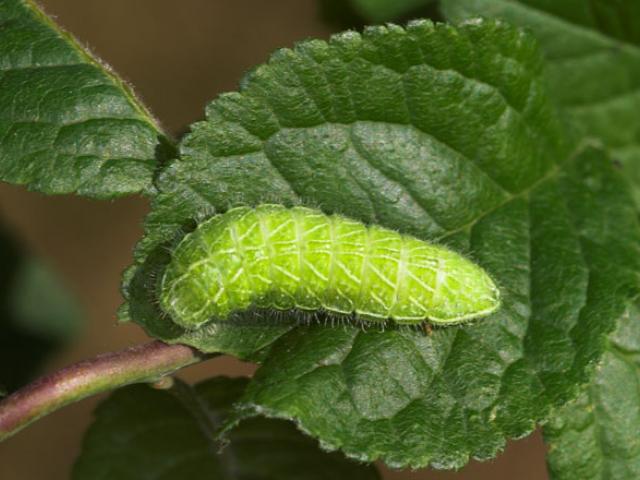Each month we’ll be finding out more about a species of butterfly or moth.
This month, let’s meet the Brown Hairstreak
Common name: Brown Hairstreak
Scientific name: Thecla betulae
Size: Its wingspan is 38-40mm
When does it fly: Mid-July to mid-September
Where does it like to live: The Brown Hairstreak loves hedges, sunny woodland rides and edges, and scrubby areas where Blackthorn can be found.
Where you can see it: After suffering a major decline in recent decades, the Brown Hairstreak is now only found in a few locations in southern and western England and Wales, and mid-west Ireland.
Amazing fact: The caterpillars of the Brown Hairstreak glow under UV light! This can help conservationists keep track of this usually very elusive butterfly.
“The Brown Hairstreak is your quintessential hedgerow butterfly. Although difficult to spot, I particularly like its vibrant markings and distinctively shaped eggs!” – Kieran Thomas, Policy Officer
The Brown Hairstreak is a small (although the largest of the hairstreaks) and elusive brown butterfly with vibrant orange streaks on the wings of the female and two small tails.
This tricky-to-spot butterfly likes to spend its time high up in trees where it feeds – usually on honeydew, which is a sweet substance secreted by aphids – breeds, and shelters.
A top tip for spotting this butterfly is to grab some binoculars and check out the tops of tall trees like Ash, Oak and Birch where groups of the adult butterflies often congregate to look for potential mates. If something spirals or zaps past with a jerky flight, it’s likely a Brown Hairstreak. However, these butterflies are morning people, so make sure to head out before and around midday to catch them while they’re most active!
Another way to spot the Brown Hairstreak is to wait for it to come down to feed on flowers like Bramble, Hemp-agrimony and Common Fleabane, or check out hedgerows or woodland edges where there is Blackthorn. After a male has successfully wooed a female – a task which involves walking in circles around the female and fluttering his wings – and they have mated, the females can be spotted flitting along hedgerows looking for new and young growth of Blackthorn on which to lay their eggs.

The Brown Hairstreak females can be quite picky when choosing a spot for their offspring, usually looking for a fork in a branch or at the base of a thorn and close to new growth. The eggs are tiny at only 0.7mm wide. However, their distinctive shape, which is a bit like a sea urchin, and bright white colour make them stand out against the dark bark of the Blackthorn, making it a slightly easier task for our butterfly recorders to spot them!

After spending seven to eight months as an egg, the caterpillars hatch to feed upon the Blackthorn. The young caterpillars start off a pale green, but at later stages of development when they are closer to pupation, take on a purple colour.

When ready to pupate, the Brown Hairstreak caterpillars find a spot on the ground amongst the leaf litter where they can tuck themselves away and form a chrysalis. The chrysalis is a mottled brown colour to help it blend in with the surrounding dead leaves.
Around four weeks later, the adult butterfly emerges. One of the latest butterflies in the UK to emerge, Brown Hairstreak adults usually fly between mid-July and mid-September, although some may stay on the wing until early October. Their brown and orange colours are particularly handy, then, helping them to blend in as the surrounding foliage takes an autumnal turn.
Sadly, the Brown Hairstreak has declined rapidly in recent decades and its range has contracted by more than 60% due to loss of its hedgerow home. Over 50% of England’s hedgerows have been removed in the last 60 years alone, and annual cutting of hedges using mechanical flails can destroy Brown Hairstreak eggs, and the new and young Blackthorn growth which the caterpillars rely on for food.
Find out more about the importance of hedgerows for butterflies and how we can help protect them at Blossoming Biodiversity: Cultivating a Greener tomorrow Through Enhanced Hedgerow Policies | Butterfly Conservation (butterfly-conservation.org)


